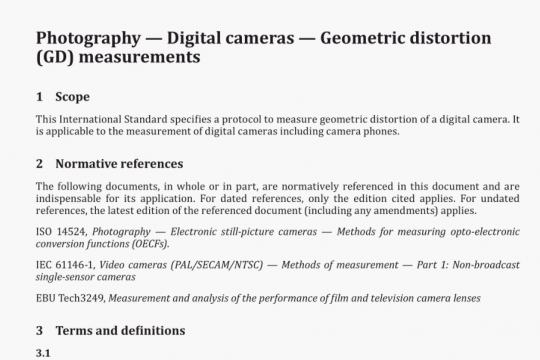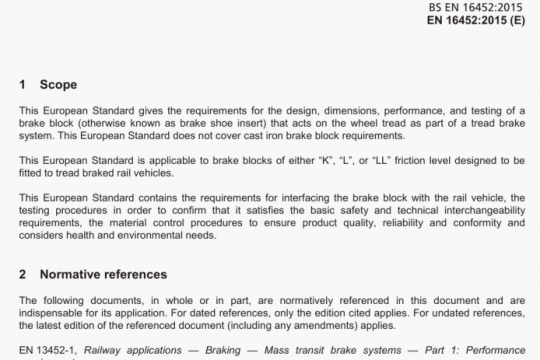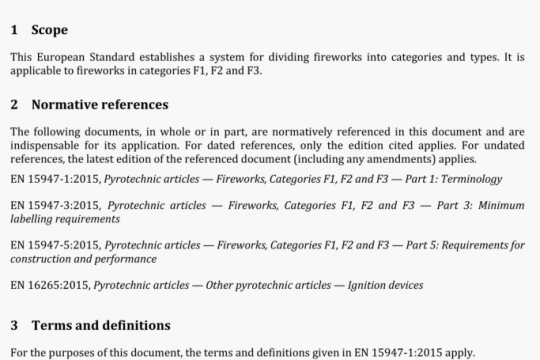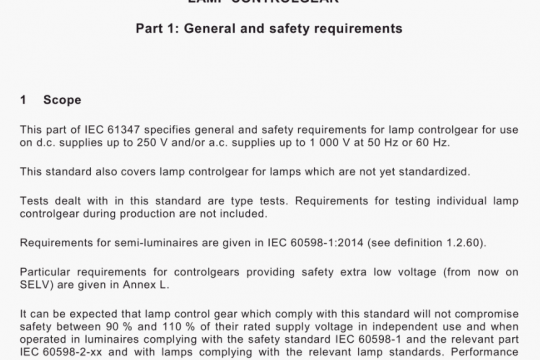BS ISO 19344:2015 pdf free
BS ISO 19344:2015 pdf free.Milk and milk products一Starter cultures, probiotics and fermented products – Quantification of lactic acid bacteria by flow cytometry.
BS ISO 19344 specifies a standardized method for the quantification of active and/or total lactic acid bacteria and probiotic strains in starter cultures used in dairy products by means of flow cytometry. The method is also applicable to probiotics used in dairy products and to fermented milk products such as yogurts containing primarily lactic acid bacteria.
This International Standard does not apply to taxonomical differentiation of bacteria. Due to its non- specificity, the method may quantify other bacteria than those within the scope of this International Standard, when present in the sample. This may lead to overestimation of the counts.
The minimum bacterial cell concentration in the sample before applying this standardized method depends on the dilution rates used in the individual protocols. Typically 106 cells per gram or ml are considered within the minimum range.
2 Normative references
The following documents, in whole or in part, are normatively referenced in this document and are indispensable for its application. For dated references, only the edition cited applies. For undated references, the latest edition of the referenced document (including any amendments) applies.
ISO 6887-1:1999, Microbiology of food and animal feeding stuffs — Preparation of test samples, initial suspension and decimal dilutions for microbiological examination — Part 1: General rules for the preparation of the initial suspension and decimal dilutions
ISO 6887-5:2010, Microbiology of food and animal feeding stuffs — Preparation of test samples, initial suspension and decimal dilutions for microbiological examination — Part 5: Specific rules for the preparation of milk and milk products
ISO 7218, Microbiology 0/food and animal feeding stuffs — General requirements and guidance for microbiological examinations
ISO 7889 I IDF 117, Yogurt — Enumeration 0/characteristic microorganisms — Colony-count technique at 37°C
ISO 15214, Microbiology a/food and animal feeding stuffs — Horizontal method for the enumeration of mesophilic lactic acid bacteria — Colony-count technique at 30 °C
3 Terms and definitions
For the purposes of this document, the following terms and definitions apply.
3.1 lactic acid bacteria
gram-positive, non-motile, non-spore forming, catalase-negative, nitrate-reductase-negative and cytochrome oxidase-negative bacterium that does not liquefy gelatine or produce indole
Note 1 to entry: Lactic acid bacteria have a fermentative metabolism which is mainly saccharolytic. Lactic acid is the major end product from carbohydrate utilization.
EXAMPLE Lactic acid bacteria of importance for the dairy industry are: Strepwcoccus thermophilus. Lactococcus lactis, Pediocaccus, Enterococcus, Leuconostoc and Lactobacillus,
3.2 probiotic strains
probiotic strains are live microorganisms which, when administered in adequate amounts, are intended to confer a health benefit to the host
EXAMPLE Probiotic strains of importance are: Bijsdobacerium animalis, Laceobacillus casel. Lactobacillus paracasel, Lactobacillus rhamnosus, Lactobacillus acidophilus, Lactobacillus reuteri, Lactobacillus piantarum and Propionibacterium freudenreichil.
Note ito entry: See Reference LII.
3.3 active fluorescent units AFU
events counted in a gate specific for scatter/fluorescence characteristics of presumed live cells, i.e. cells stained for the specific activity indicator used in the protocol.BS ISO 19344 pdf download.




